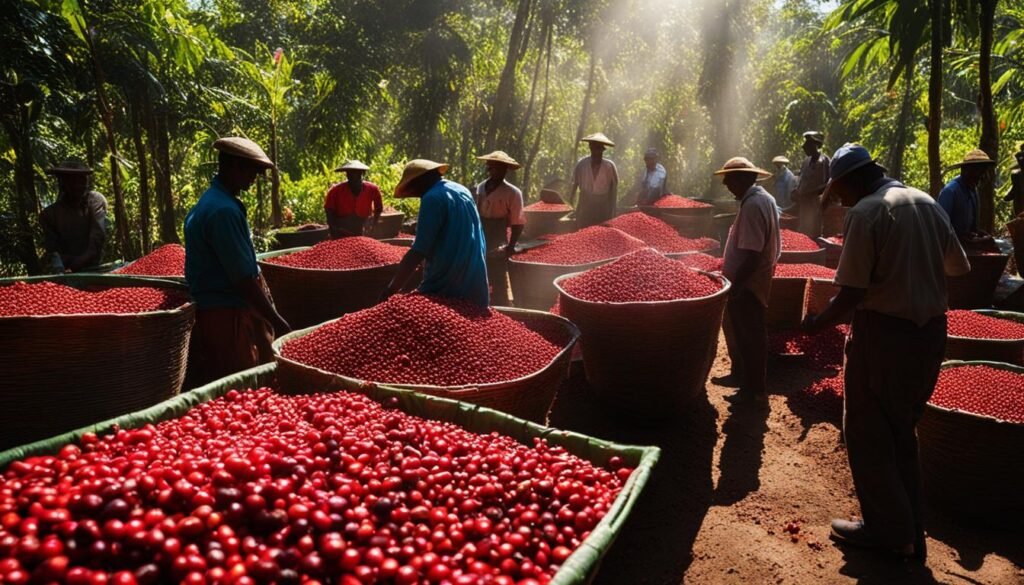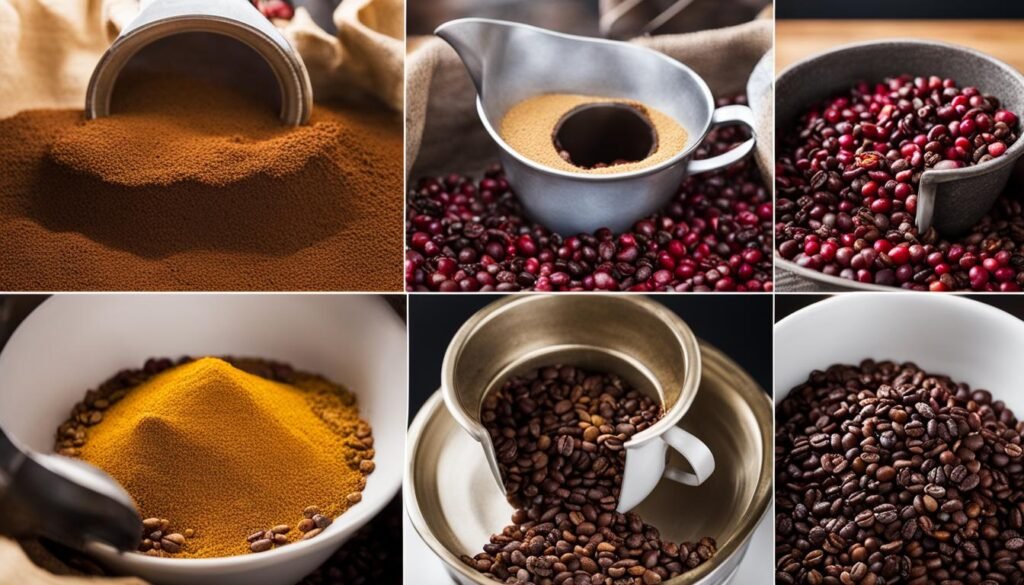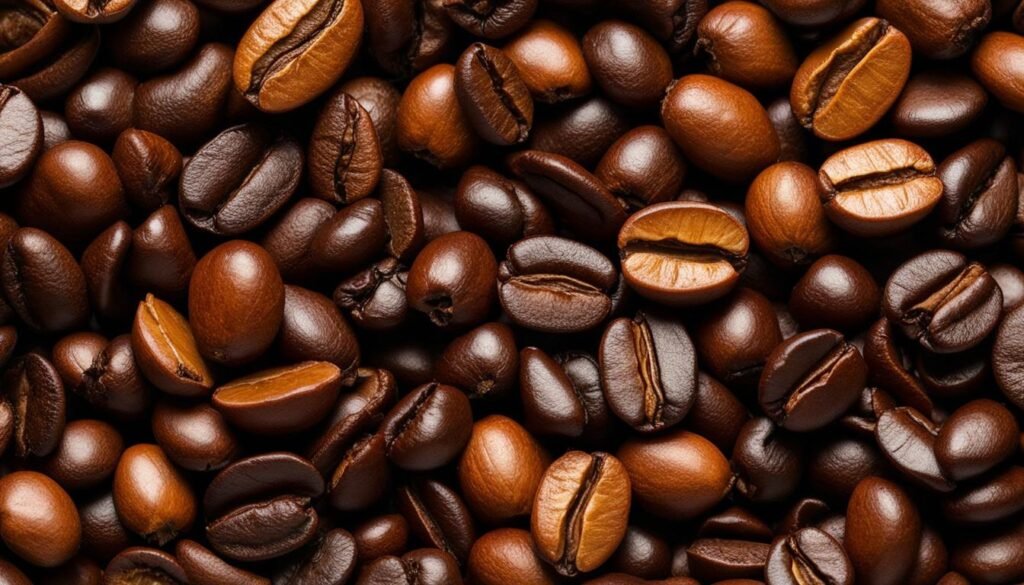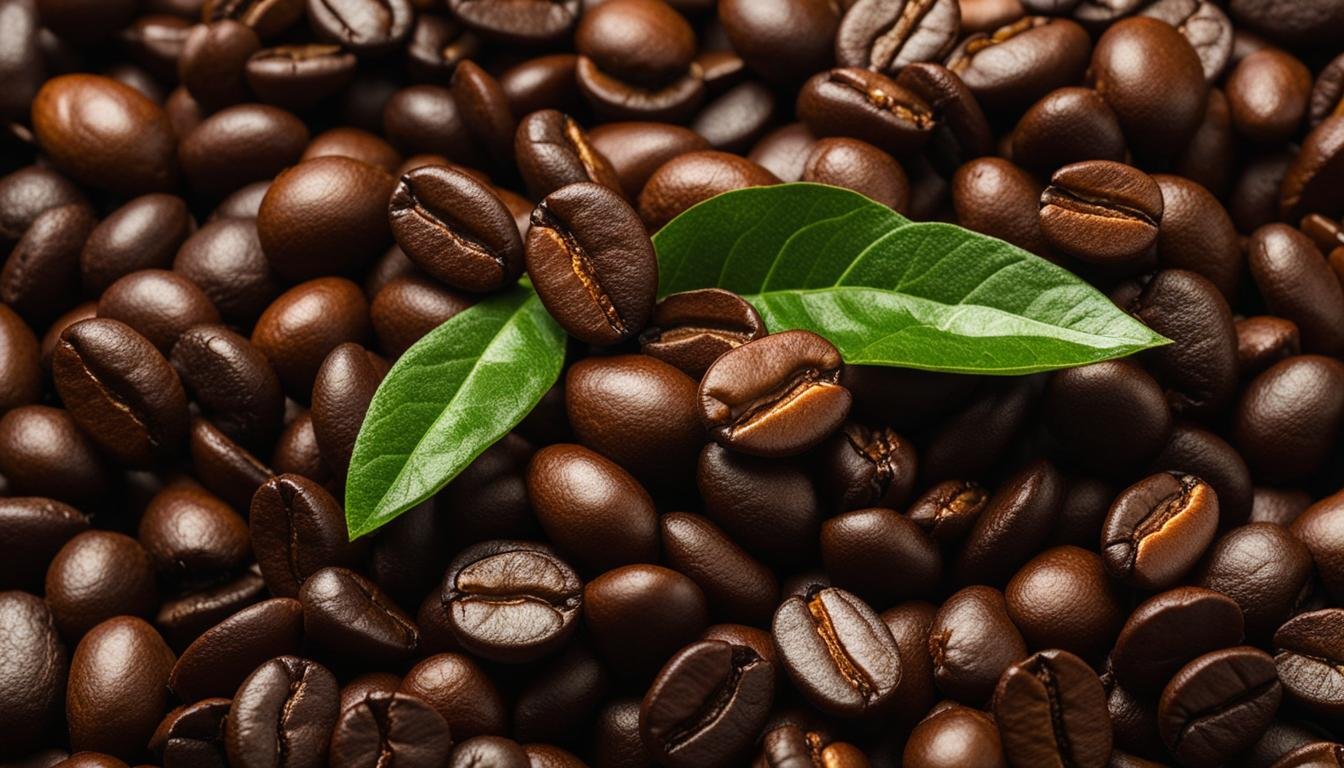Welcome to our exploration of the fascinating world of coffee beans! Today, we dive into the age-old question: Are coffee beans truly legumes? Prepare to have your preconceived notions challenged as we uncover the truth behind their classification and reveal the remarkable journey of these tiny seeds.
Key Takeaways:
- Coffee beans are not actually beans, but seeds of the Coffea plant.
- Despite their misleading name, coffee beans do not qualify as legumes, nuts, or berries.
- The anatomy and processing methods of coffee beans contribute to their unique flavor profiles.
- Understanding the botanical classification of coffee deepens our appreciation for its diverse origins and characteristics.
- Enjoy your next cup of coffee knowing that you’re savoring the essence of coffee seeds, not beans!
The Anatomy of a Coffee “Bean”
Understanding the anatomy of a coffee “bean” is essential to unraveling the mystery behind its classification. Let’s take a closer look at the anatomy of a coffee cherry, the fruit that houses the coffee seeds we commonly refer to as coffee beans.
The coffee cherry consists of several layers, each playing a role in protecting and nurturing the seeds within. The outermost layer, known as the exocarp, is a thin, waxy skin that shields the inner layers from external elements.
Underneath the exocarp lies the sweet and fruity mesocarp. This layer not only provides nutrients to the developing seeds but also contributes to the flavors and aromas associated with different coffee varieties.
Beneath the mesocarp, we find the mucilage, a sticky substance that surrounds the coffee seeds. This layer helps to regulate moisture levels and supports the germination process. Finally, the seeds themselves are enclosed within a thin and papery layer called the parchment, which acts as a protective barrier.
By understanding the intricate layers that make up a coffee cherry, we gain a deeper appreciation for the complex journey that coffee undergoes from fruit to “bean.”
The Journey from Cherry to “Bean”

Now that we understand the anatomy of a coffee “bean,” let’s delve into the fascinating journey it takes from being a cherry to becoming the beloved coffee we enjoy. Coffee cherry processing is a meticulous process that involves several crucial steps to ensure the highest quality beans.
First, the cherries are selectively harvested when they reach peak ripeness. This careful selection guarantees that only the best cherries make their way into the production process. Once harvested, the cherries undergo pulping, where the outer layers of skin and fruit are removed. This step is crucial in revealing the coffee seeds, which are still encased in parchment and mucilage.
Next, the seeds go through fermentation, a natural process that removes any remaining mucilage and impurities. After fermentation, the seeds are gently dried to achieve the desired moisture content. This drying process is vital, as improper drying can negatively impact the beans’ quality and flavor. Once dried, the seeds go through milling and hulling to remove the parchment layer, revealing the green coffee beans.
Finally, the green coffee beans are ready for the last stage of their transformation: roasting. Roasting is an art form that requires skill and expertise. It is during this process that the flavors and aromas of the coffee beans are unlocked, resulting in the rich and distinctive flavors we associate with different coffee varieties.
The Journey from Cherry to “Bean” Overview:
- Selective harvesting of ripe cherries
- Pulping to remove outer layers of skin and fruit
- Fermentation to remove remaining mucilage
- Drying the seeds to the desired moisture content
- Milling and hulling to remove the parchment layer
- Roasting to enhance flavors and aromas
The journey from coffee cherry to coffee “bean” is a meticulous process that requires attention to detail at every stage. By understanding the complexity of coffee bean production, we can better appreciate the flavors and aromas that make each cup of coffee unique.
The Flavor Impact of Processing Methods

When it comes to coffee, the journey from cherry to “bean” involves a series of carefully orchestrated steps. However, one crucial aspect that greatly influences the final flavor profile of coffee is the processing method used. Two commonly employed processing methods are natural processing and washed processing.
Natural Processing
Natural processing, also known as dry processing, involves drying the coffee cherries with the pulp intact. This method allows the cherries to naturally ferment and infuse the seeds with their fruity flavors. As a result, natural processed coffees often exhibit sweeter and fruitier notes, with hints of berries, tropical fruits, and even wine-like characteristics. The inherent sweetness and complexity of natural processed coffees make them highly sought after by coffee enthusiasts.
Washed Processing
On the other hand, washed processing, also referred to as wet processing, entails removing the pulp and mucilage from the coffee cherries before drying. This method produces a cleaner and more vibrant cup of coffee. The removal of the fruit layers during the processing stage allows the true essence of the coffee beans to shine through, resulting in a coffee with a crisp acidity, floral aromas, and distinct flavor clarity. Washed processed coffees are often prized for their brightness and clean taste.
The choice between natural and washed processing methods is a matter of preference and can significantly impact the flavor characteristics of the final cup. While natural processed coffees tend to be more fruit-forward and complex, washed processed coffees offer a cleaner and more defined flavor profile. Ultimately, the decision lies in the hands of coffee producers, who carefully consider the unique characteristics of the coffee cherries and the desired flavor outcome when selecting the appropriate processing method.
Debunking the Misconceptions: Not Legumes, Nuts, or Berries

When it comes to coffee beans, there are plenty of misconceptions that often lead to confusion. Let’s set the record straight and debunk some of the common beliefs surrounding coffee beans.
First and foremost, coffee beans are often mistakenly classified as legumes. However, this is not accurate. While they may resemble legumes in appearance, coffee beans do not grow in pods like traditional legumes. Instead, they are found inside the coffee cherry, encased within layers of pulp. So, despite the misleading name, coffee beans are not legumes.
Another misconception is that coffee beans are nuts. This is not the case either. Nuts typically have hard outer shells that do not split open, whereas coffee beans do not have a hard shell. They are protected by thin layers, including the parchment, which is removed during the processing stage. So, coffee beans cannot be classified as nuts.
Lastly, some may believe that coffee beans are berries due to the resemblance of the coffee cherry to a berry. However, according to botanical definitions, coffee cherries do not meet the criteria of a true berry. The endocarp or parchment layer of the coffee cherry is hard, which excludes it from the berry category. Therefore, coffee beans cannot be considered berries either.
Summarizing the Misconceptions:
- Coffee beans are not legumes, as they do not grow in pods like traditional legumes.
- Coffee beans are not nuts, as they do not have a hard outer shell that does not split open.
- Coffee beans are not berries, as the endocarp or parchment layer is hard, not meeting the botanical definition of a berry.
The Botanical Classification of Coffee
When it comes to understanding the diverse flavors and origins of coffee, it’s essential to delve into its botanical classification. Coffee plants belong to the Rubiaceae family, a large family of flowering plants that includes coffee, gardenias, and quinine. Within this family, coffee is classified under the Coffea genus, consisting of several species that contribute to the rich tapestry of coffee flavors.
One of the most widely consumed coffee species is Coffea Arabica, which accounts for over 70% of the world’s coffee production. Known for its delicate and nuanced flavors, Arabica coffee is highly prized by coffee enthusiasts. Another notable species is Coffea Robusta, which has a stronger and more robust taste profile. Coffea Liberica, although less commonly consumed, offers its own unique flavor characteristics.
Each coffee species within the Rubiaceae family has its own distinct flavor profile and characteristics. From the delicate and complex flavors of Arabica to the bold and robust notes of Robusta, coffee lovers have a wide array of options to explore. By understanding the botanical classification of coffee, we can begin to appreciate the nuanced flavors that different species bring to our cups.
Exploring Coffee Flavor Profiles
Coffee flavor profiles are influenced by various factors, including species, growing conditions, processing methods, and roasting techniques. Arabica coffee, for example, is often associated with floral and fruity notes, with variations depending on the specific coffee origin. Robusta, on the other hand, is known for its higher caffeine content and stronger, more bitter taste.
- Light Roasts: Lightly roasted coffees tend to highlight the bright acidity and delicate flavors of the beans. This roast level is commonly associated with floral, citrus, and tea-like notes.
- Medium Roasts: Medium roasts strike a balance between acidity and richness. They often exhibit a well-rounded flavor profile with notes of chocolate, nuts, and caramel.
- Dark Roasts: Dark roasts are characterized by bold and intense flavors. The beans are roasted longer, resulting in a rich, smoky, and sometimes even burnt taste.
By exploring the botanical classification and flavor profiles of coffee, we can deepen our understanding and appreciation for this beloved beverage. The diverse range of coffee species and their unique flavor characteristics provide endless opportunities to explore new tastes and preferences. So let’s raise our cups and celebrate the wonders of coffee!
Conclusion
In conclusion, let’s recap the key facts and characteristics of coffee beans. Despite their misleading name, coffee beans are actually seeds. They are found within the layers of pulp in the coffee cherry and are not classified as legumes, nuts, or berries. Coffee beans belong to the Rubiaceae family and come in different species, each with its own unique flavor profile.
Understanding the anatomy of a coffee “bean” is crucial to appreciating its journey from cherry to cup. The processing methods, such as natural or washed, significantly impact the flavors and characteristics of the final coffee. It’s fascinating to explore how the choices made during processing can result in different taste experiences.
As coffee enthusiasts, it’s important for us to dispel the misconceptions surrounding coffee beans. They may not be classified as legumes, nuts, or berries, but they have their own distinct identity. By knowing more about the botanical classification and characteristics of coffee, we can deepen our understanding and enjoyment of this beloved beverage.
FAQ
Are coffee beans actually beans?
No, coffee beans are not actually beans but seeds. They are the seeds of the Coffea plant, resembling legumes in appearance.
Why are coffee beans called beans?
The name “coffee beans” originated during the era of European exploration when coffee was introduced to the Old World. The seeds were mistakenly referred to as beans due to their resemblance to legumes.
What is the anatomy of a coffee “bean”?
The coffee “bean” is actually the seed of the Coffea plant, enclosed within layers of pulp inside the coffee cherry. It is covered by the parchment, mucilage, and silver skin.
How are coffee beans processed?
Coffee beans undergo several crucial steps to transform from cherry to “bean.” This includes pulping, fermentation, drying, milling, hulling, and finally roasting.
What is the impact of processing methods on the flavor of coffee?
The choice of processing method, such as natural or washed, greatly influences the flavor profile of coffee. Natural processing tends to result in sweeter and fruitier notes, while washed processing produces a cleaner and more vibrant cup.
Are coffee beans legumes, nuts, or berries?
No, coffee beans are distinct entities and do not meet the botanical definitions of legumes, nuts, or berries. Legumes grow in pods, nuts have hard outer shells, and berries have a soft endocarp.
How is coffee classified botanically?
Coffee plants belong to the Rubiaceae family, not the legume family. The most common species consumed is Coffea Arabica, but other species such as Coffea Robusta and Coffea Liberica are also used.

Leave a Reply